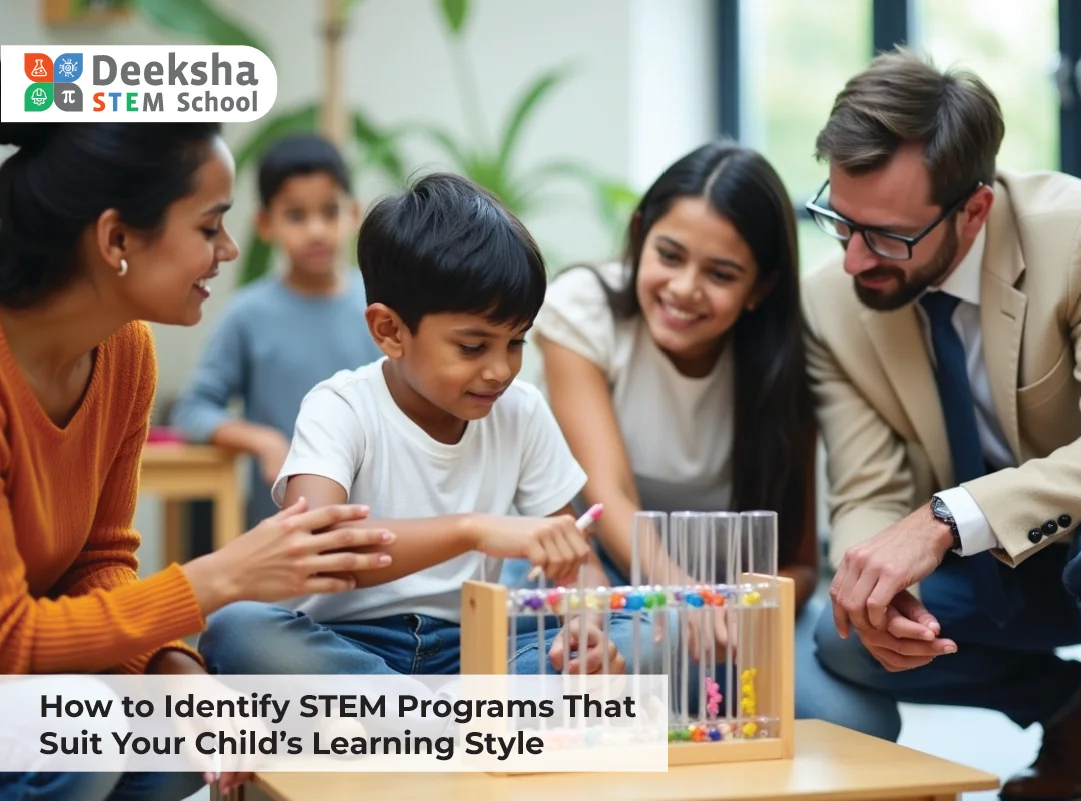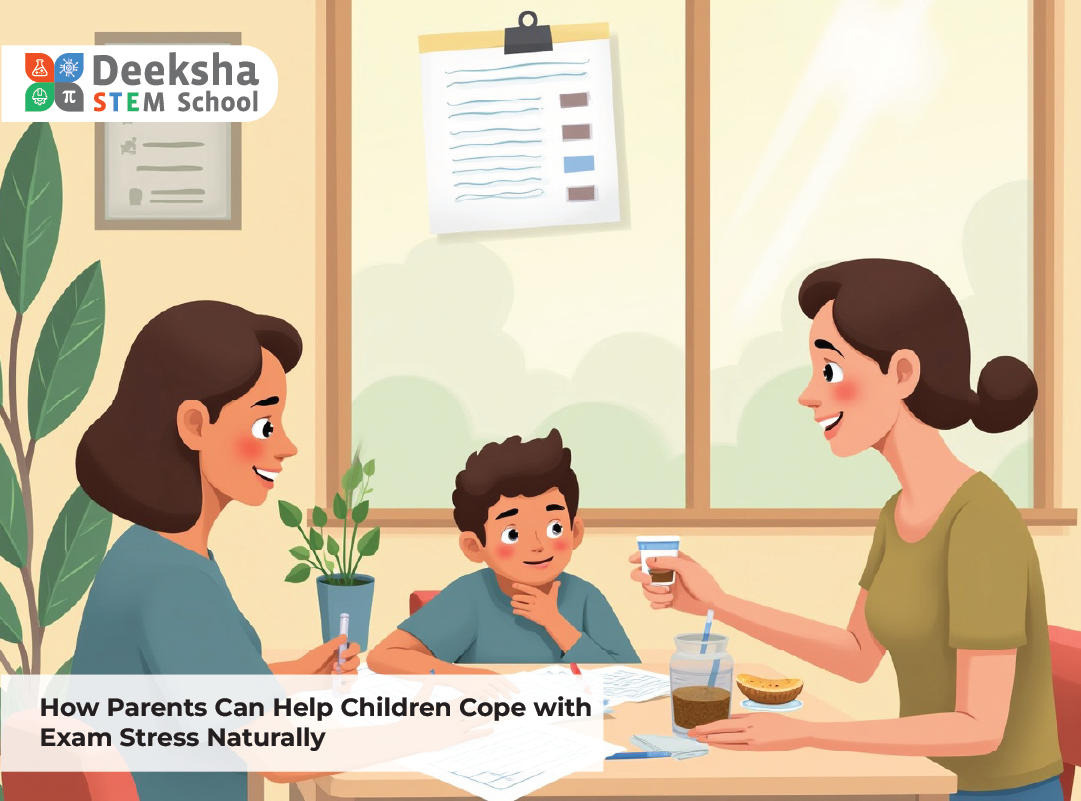How to Identify STEM Programs That Suit Your Child’s Learning Style

Introduction
STEM (Science, Technology, Engineering, and Mathematics) programs are becoming increasingly popular as parents seek to provide their children with the skills they’ll need to succeed in a tech-driven world. However, every child learns differently, and finding a STEM program that aligns with your child’s unique learning style is crucial to ensuring their success and engagement. Understanding your child’s learning preferences can help you choose a program that not only matches their strengths but also supports their personal growth and confidence in STEM subjects.
In this guide, we’ll explore different learning styles and provide tips on how to identify STEM programs that best suit your child’s needs.
Understanding Learning Styles
Before diving into specific STEM programs, it’s important to first understand the different learning styles children may have. While no child fits perfectly into one category, many have preferences that influence how they absorb information. The most common learning styles include:
- Visual Learners: Children who learn best through seeing. They prefer diagrams, charts, videos, and written instructions.
- Auditory Learners: Children who learn best through listening. They retain information from discussions, lectures, and verbal explanations.
- Kinesthetic Learners: Children who learn best by doing. They need hands-on experiences, experiments, and physical activities to understand concepts.
- Reading/Writing Learners: Children who learn best by reading texts, writing notes, and organizing information into written formats.
Understanding which learning style your child leans toward can help you select a STEM program that engages them in the most effective way.
Identifying Your Child’s Preferred Learning Style
The first step in choosing the right STEM program is identifying your child’s preferred learning style. Observe how they naturally engage with the world and how they respond to different types of tasks. Ask yourself:
- Does my child enjoy visual aids like charts and diagrams, or do they prefer to listen and discuss?
- Do they prefer hands-on activities like building, experimenting, and tinkering, or are they more comfortable reading and writing to understand a concept?
- How do they respond to group learning situations versus independent study?
Once you have a clear understanding of your child’s preferences, you can look for STEM programs that align with their style of learning. This will not only help them stay engaged but also make learning more enjoyable and effective.
STEM Programs for Visual Learners
Children who are visual learners respond best to programs that incorporate plenty of visuals like diagrams, videos, and demonstrations. They thrive when they can see how things work and visualize processes.
Best programs:
- Robotics programs that use visual guides and step-by-step instructions with plenty of diagrams.
- Coding platforms that teach through animations and visual examples of how code works.
- Science programs that use video demonstrations of experiments, or virtual labs where they can visualize chemical reactions or physical processes.
Tip: Choose programs that offer interactive video tutorials or visual presentations, so your child can follow along and understand concepts through sight.
4. STEM Programs for Auditory Learners
Auditory learners absorb information best by hearing it explained. They enjoy discussions, listening to lectures, and verbal problem-solving exercises. They are more likely to retain information when they talk through problems or listen to others explain concepts.
Best programs:
- STEM workshops or group learning programs that include discussions and verbal explanations of key concepts.
- Podcasts or audio-based learning programs where children can listen to lectures or conversations on scientific topics.
- Online coding courses with interactive voice-based tutorials that walk students through coding challenges.
Tip: Look for STEM programs that involve plenty of verbal interaction and the opportunity to engage in group discussions or explanations.
5. STEM Programs for Kinesthetic Learners
Kinesthetic learners thrive in hands-on environments where they can build, create, and experiment. These children prefer to learn by doing and are most engaged when they can physically interact with materials and projects.
Best programs:
- Engineering or robotics kits that allow children to build, take apart, and reconstruct devices.
- Science experiments and laboratory-based programs that let children conduct their own experiments with real-world materials.
- Coding programs that integrate physical elements, such as building robots or controlling devices through code.
Tip: Choose STEM programs that are highly interactive and encourage hands-on exploration, providing your child with opportunities to engage directly with the subject matter.
6. STEM Programs for Reading/Writing Learners
Children who prefer reading and writing as their primary method of learning enjoy programs that allow them to read instructions, take notes, and organize information through written materials. They excel when they can read about a concept, reflect on it, and write out their own ideas or solutions.
Best programs:
- STEM workbooks or online platforms that include written guides, exercises, and reflective questions.
- Math and science programs that offer written problems and detailed explanations of how to solve them.
- Programming or coding courses where they can read code, analyze examples, and write their own scripts based on written instructions.
Tip: Opt for STEM programs that provide ample written content, quizzes, and opportunities for your child to reflect on and write about what they are learning.
7. Blended Learning Programs: A Balance for All Learning Styles
While your child may lean toward a specific learning style, it’s important to find programs that offer a balance of approaches. Blended learning programs, which incorporate visual, auditory, and hands-on elements, allow children to explore STEM in multiple ways. These programs often combine video tutorials, interactive projects, and written exercises, ensuring that children can engage with the material from different angles.
Example: Many online coding platforms use a combination of visual tutorials, audio instructions, and interactive coding challenges, catering to multiple learning styles simultaneously.
Tip: Look for programs that offer a mix of teaching methods, so your child can experience STEM concepts from different perspectives and find what works best for them.
Evaluate the Program’s Flexibility and Structure
When selecting a STEM program, it’s also important to consider the flexibility and structure it offers. Some children thrive in structured environments with clear goals and step-by-step instructions, while others prefer the freedom to explore and experiment at their own pace.
- For children who need structure, look for programs that offer clear lesson plans, progress tracking, and regular assessments.
- For children who prefer flexibility, choose programs that allow them to move through material at their own pace, offering plenty of room for open-ended exploration and creative projects.
Conclusion: Finding the Perfect Fit
Choosing a STEM program that suits your child’s learning style can make a significant difference in how they engage with and enjoy STEM subjects. By understanding your child’s preferences — whether they are visual, auditory, kinesthetic, or reading/writing learners — you can select a program that will keep them motivated, build their confidence, and nurture their curiosity.
Whether your child thrives with hands-on experiments, loves visual learning through videos and diagrams, or prefers to read and write their way through scientific concepts, there are STEM programs designed to meet their needs. By finding the right fit, you’re setting your child up for success in STEM fields and beyond.




